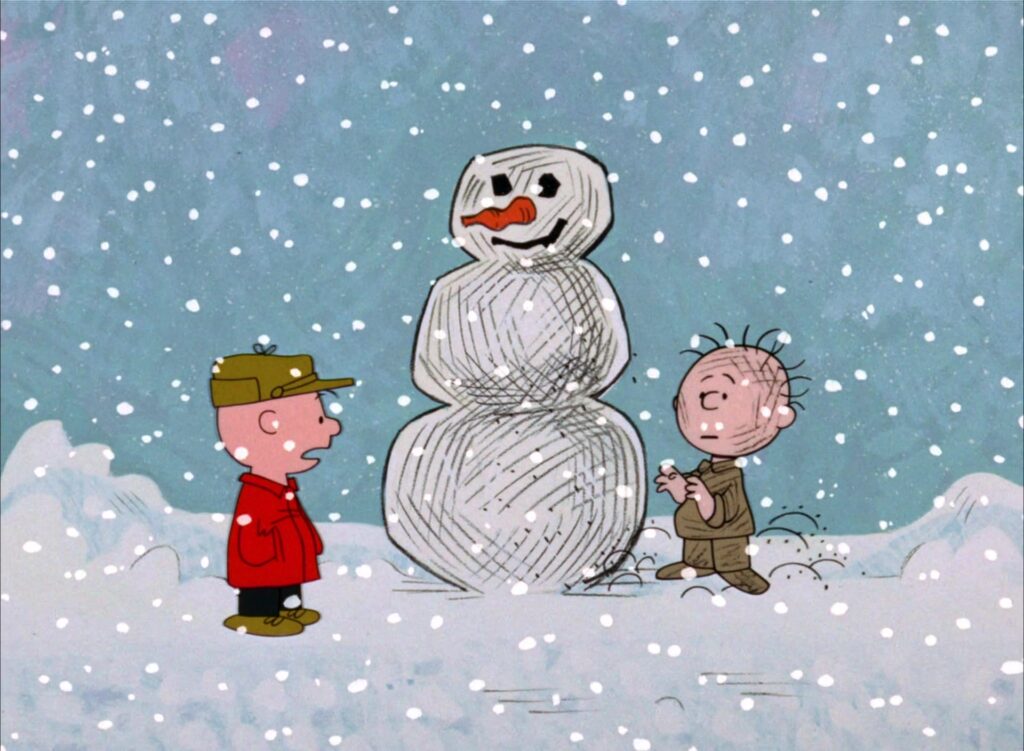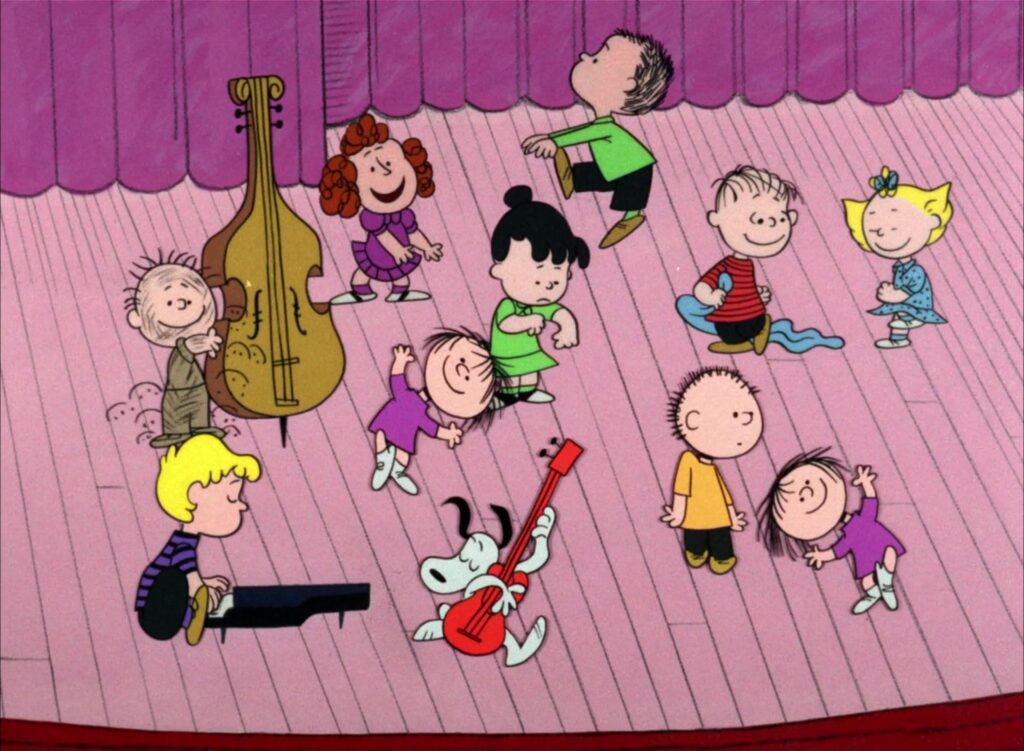Isn't there anyone who knows what Christmas is all about?
A Charlie Brown Christmas is a miracle. It’s my favorite holiday special and one of my favorite films, period. This is in spite of the animated short not really having a plot. If you were to write a treatment, it would seem completely a mess — perhaps because it was outlined by Charles Schulz and producer Lee Mendelson in less than a day: An elementary school student suffering from depression gets recruited to direct a Christmas play. He starts one rehearsal (doesn’t finish it), purchases a tree, undergoes an existential crisis, hears the story of Christ’s birth, and everyone sings a hymn. Credits.
It just goes to show you how much more a film can be than the shape of its narrative. Because A Charlie Brown Christmas, in spite of (and, in part, because of) its shagginess, is a masterpiece of holiday mood and audiovisual texture.

The story of the creation of A Charlie Brown Christmas is a legend in its own right. The Peanuts comic strip was a national sensation by the early ‘60s. Schulz, the strip’s creator, and Mendelson, a TV producer who specialized in sports, teamed up to make a documentary about the strip. The idea was to include a few bits of original animation reenacting strips, but otherwise be talking heads.
None of the networks bought the pitch. At last, Coca Cola gave them a call and offered to fund the project on two conditions: first, it would be an entirely animated short, not a documentary. Second, they had to pitch a story three days later. Mendelson accepted the offer on the spot, and he and Schulz got to work. The outline was finished hours later, and Coca Cola signed off with the proviso that it needed to air that winter, giving the entire production just a few months to complete.
Schulz insisted on hiring Bill Melendez to animate the story. Melendez had worked on some of the golden age Disney films like Pinocchio, but had hopped around small projects in the ensuing years, ultimately opening a studio run from his basement. One of those little jobs was a few commercials animating the Peanuts characters, and he and Schulz hit it off. Melendez signed on and insisted the short production timeframe was realistic even though he had never delivered a project of such scope so fast. (He claims to have called Bill Hanna, the famous animator from Hanna-Barbera, desperately looking for advice, just to get radio silence.)

The fourth key creative talent in the project is Vince Guaraldi, a jazz pianist and composer. It’s tough to overstate how imporant Guaraldi’s work is to creating the film’s texture. It’s like John Williams to Star Wars or Simon and Garfunkel to The Graduate: It’s the very soul and essence of the film. The score is a blend of jazz and classical, and every single piece is lovely. “Christmastime is Here” in particular is one of the great modern Christmas songs, a somber and expressive waltz that perfectly captures the ennui that Charlie Brown feels.
Schulz, Mendelson, Melendez, and Guaraldi took plenty of risks making A Charlie Brown Christmas, and every single one of them was the right choice. They ditched the then-ubiquitous laugh track at Schulz’s request — the thought of this special with a piped in audience laugh makes me want to gag. Another unusual choice was casting child actors the age of the characters rather than adult voice actors. So much of the film’s charm comes from hearing kids utter Schulz’s dialogue with no winking or irony: just children grappling with the meaning of Christmas in wry, old-soul ways.
Melendez, despite limited time and resources, brings tremendous but understated artistry to the animation. The settings are typically quite simple, with just a couple moving figures, but the actual character animation is energetic and playful. The design of the spaces and background does not have much of a physical sense of space, but instead impressionistically captures the feeling of each location. This is especially true of the scene where Charlie Brown explore a Christmas tree farm, the multicolored trees springing from all dimensions of the frame, drowning Charlie Brown in consumerist glitz. Brilliant stuff.

I love pretty much every scene of this 25-minute short, so an enumeration of favorites would basically be a full on recap. But a few moments that always tickle me in particular: The hilarious chaos of the dancing at the play rehearsal is amazing. I also find it so charming how much of Charlie Brown’s suffering is self-inflicted: He latches immediately onto the specific tree that all of his peers will hate, and even voice-of-reason Linus can’t talk him out of it.
The story climaxes with Linus narrating one of the passages from the Bible describing Jesus’s birth. It is explicitly a Christian celebration of the holiday. On the surface, this is a tacked-on bit of “keep Christ in Christmas” proselytizing that cuts against the humanism of the rest of the short and presents a religious viewpoint on the holiday. But I’ve always found this ending so moving because Schulz and co. do an incredible job of transforming the Nativity story into a universal totem of hope and renewal.
We all find ourselves spiritually eroded during the winter months. Most people cope by putting on displays and buying trinkets. Charlie Brown sees the hollow spectacle of holiday season for what it is, and Linus reminds him (and us) that true healing comes from something deeper. There’s something within the human spirit that keeps us persevering even when the days get cold and short and hope is lost. That’s what Christmas is all about, Charlie Brown.
Is It Good?
Masterpiece: Tour De Good (8/8)
Awards, Honors, & Rankings
Dan is the founder and head critic of The Goods. Follow Dan on Letterboxd. Join the Discord for updates and discussion.

